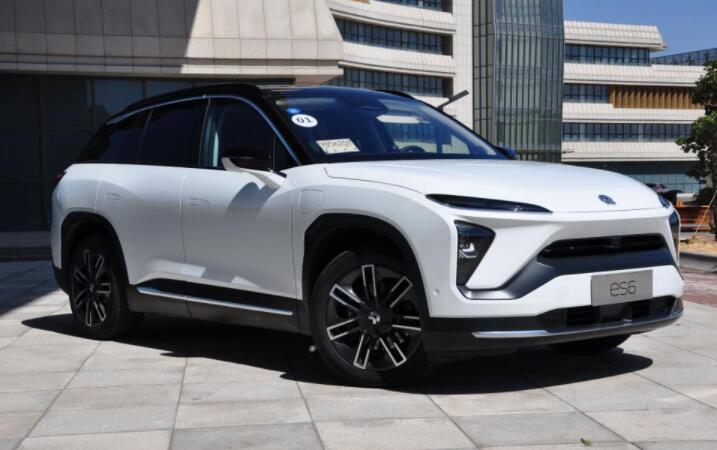
At the recent Beijing Auto Show, Chinese electric vehicle (EV) maker Nio (NYSE: NIO) released Nio OS 2.7.0 and one of the major updates is the NOP (Navigate On Pilot) pilot assist feature.
On the sidelines of the Beijing Auto Show, Zhang Jianyong, head of Nio's driverless systems engineering department, spoke to local media about Nio's latest NOP upgrade and autopilot development.
Zhang Jianyong said Nio has invested a lot of resources in the development of the NOP, which has more than 2 million kilometers of measured data in testing.
"We are being very careful in our promotion in the field of assisted driving systems. We will increase our communication with users to help them understand the boundaries of this system and hopefully they will be more mature and stable in using our assisted driving system."
Zhang Jianyong said that Nio will keep emphasizing that my entire automated driving assistance system is needed for the driver to take control of the driving, and then the system will act as a driving assistant.
When it comes to industry leader Tesla, Zhang Jianyong believes that Tesla does a lot of aggressive, but somewhat aggressive strategies, compared to Nio, which will do more balancing and middle-state considerations on both sides.
"Theoretically, no system can cover all scenarios 100%, but you can't make the system 100% before you give it to users."
Zhang Jianyong reveals that it takes 2 or 3 months for Nio's vehicles to determine the user's behavior and then learn their driving habits.
However, Nio still chooses to adjust these aspects step by step, rather than letting the vehicle help the user make more decisions after learning. Common actions like accelerating and decelerating are easier to match with a little tweaking by the machine.
But driving behaviors like lane changing and queue jumping are uncomfortable for users if they let the machine help them by making adjustments, because a particular decision is not what they expected.
Nio's NOP system is a deep integration of the navigation system with the Nio Pilot's automated driving assistance features, allowing the vehicle to follow the navigation-planned path for automatic ramp entry and exit, overtaking, merging, and cruise driving under certain conditions.
Pilot Assist will be pushed to Nio owners in batches via FOTA in October along with the Nio OS 2.7.0 update.
In addition to NOP, Nio OS2.7.0 will also introduce nearly 20 new and optimized features such as camera-based driver fatigue warning, remote seat ventilation and so on.
Zhang Jianyong revealed that compared to Tesla's NOA system, which only covers the domestic highway, Nio's NOP not only covers the highway, but also covers the city elevated and open road.
At the same time, Nio's NOP speed regulation and control will be more in line with the psychological expectations of most car owners, Nio's NOP speed in different scenarios have a lot of regulation and control.
In terms of human-computer interaction, Nio's NOP is deeply integrated with all human-computer interaction scenarios such as NOMI, its function room has a better and more reasonable way to remind users to take over the vehicle as early as possible before, for example, entering a toll booth.
Zhang Jianyong talked about how Nio was chosen to do its own development in the field of automated driving from 2016 and 2017, and that there was a very heated internal discussion when it was first doing the definition of the model and early development of the product.
In 2015, Nio's autopilot was established. At that time, there were several professional and mature Tier1 system suppliers in the industry, such as Bosch and Continental, which could provide more standard solutions, like ACC, AE, lane departure warning and lane keeping.
Of course, there was some debate within Nio, but the first time Nio chose Bosch as the whole system solution provider, Bosch provided cameras, millimeter wave radar, the entire control system, including algorithms, software are developed by Bosch.
At that time, there were two views within Nio: the first one was that the system required a high level of security and most of the car companies still used Bosch and Delphi's systems, so it would be very risky to develop the system on its own.
The second, the team started off with a car to be transformed into a DEMO car in order to prove that independent development was OK, and a team of 6 or 7 people ran the whole function with a Mobileye system.
In March 2017, Nio set up a small R&D team in the US and an R&D team in China as well.
William Li Bin, founder, chairman and CEO of Nio, believes that autopilot is a very critical technology for smart electric vehicles. Human-machine interaction and automated driving are very much related to user experience, so we must do them ourselves. Even if you take risks, Nio should be brave enough to innovate.
Then, Nio made the decision not to use the original Bosch solution system, but only its millimeter-wave radar.
Nio chose Mobileye's solution for the car vision, the autopilot, the central pre-controller, and all the algorithms, including the verification of the entire system, were all done by Nio itself.



